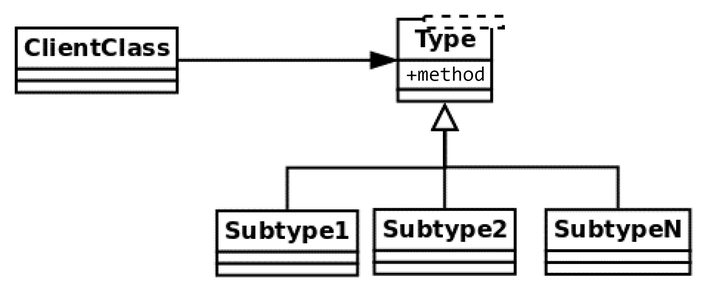 In this article, we will explore the Liskovs substitution principle, one of the SOLID principles and how to implement it in a Pythonic way. The SOLID principles entail a series of good practices to achieve better-quality software. In case some of you arent aware of what SOLID stands for, here it is:
In this article, we will explore the Liskovs substitution principle, one of the SOLID principles and how to implement it in a Pythonic way. The SOLID principles entail a series of good practices to achieve better-quality software. In case some of you arent aware of what SOLID stands for, here it is:
- S: Single responsibility principle
- O: Open/closed principle
- L: Liskov’s substitution principle
- I: Interface segregation principle
- D: Dependency inversion principle
The goal of this article is to implement proper class hierarchies in object-oriented design, by complying with Liskovs substitution principle.
Liskovs substitution principle
Liskovs substitution principle (LSP) states that there is a series of properties that an object type must hold to preserve the reliability of its design.
The main idea behind LSP is that, for any class, a client should be able to use any of its subtypes indistinguishably, without even noticing, and therefore without compromising the expected behavior at runtime. That means that clients are completely isolated and unaware of changes in the class hierarchy.
More formally, this is the original definition (LISKOV 01) of LSP: if S is a subtype of T, then objects of type T may be replaced by objects of type S, without breaking the program.
This can be understood with the help of a generic diagram such as the following one. Imagine that there is some client class that requires (includes) objects of another type. Generally speaking, we will want this client to interact with objects of some type, namely, it will work through an interface.
Now, this type might as well be just a generic interface definition, an abstract class or an interface, not a class with the behavior itself. There may be several subclasses extending this type (described in Figure 1 with the name Subtype, up to N). The idea behind this principle is that if the hierarchy is correctly implemented, the client class has to be able to work with instances of any of the subclasses without even noticing. These objects should be interchangeable, as Figure 1 shows:

Figure 1: A generic subtypes hierarchy
This is related to other design principles we have already visited, like designing for interfaces. A good class must define a clear and concise interface, and as long as subclasses honor that interface, the program will remain correct.
As a consequence of this, the principle also relates to the ideas behind designing by contract. There is a contract between a given type and a client. By following the rules of LSP, the design will make sure that subclasses respect the contracts as they are defined by parent classes.
Detecting LSP issues with tools
There are some scenarios so notoriously wrong with respect to the LSP that they can be easily identified by the tools such as mypy and pylint.
Using mypy to detect incorrect method signatures
By using type annotations, throughout our code, and configuring mypy, we can quickly detect some basic errors early, and check basic compliance with LSP for free.
If one of the subclasses of the Event class were to override a method in an incompatible fashion, mypy would notice this by inspecting the annotations:
class Event:
…
def meets_condition(self, event_data: dict) -> bool:
return False
class LoginEvent(Event):
def meets_condition(self, event_data: list) -> bool:
return bool(event_data)
When we run mypy on this file, we will get an error message saying the following:
error: Argument 1 of meets_condition incompatible with supertype Event
The violation to LSP is clearsince the derived class is using a type for the event_data parameter that is different from the one defined on the base class, we cannot expect them to work equally. Remember that, according to this principle, any caller of this hierarchy has to be able to work with Event or LoginEvent transparently, without noticing any difference. Interchanging objects of these two types should not make the application fail. Failure to do so would break the polymorphism on the hierarchy.
The same error would have occurred if the return type was changed for something other than a Boolean value. The rationale is that clients of this code are expecting a Boolean value to work with. If one of the derived classes changes this return type, it would be breaking the contract, and again, we cannot expect the program to continue working normally.
A quick note about types that are not the same but share a common interface: even though this is just a simple example to demonstrate the error, it is still true that both dictionaries and lists have something in common; they are both iterables. This means that in some cases, it might be valid to have a method that expects a dictionary and another one expecting to receive a list, as long as both treat the parameters through the iterable interface. In this case, the problem would not lie in the logic itself (LSP might still apply), but in the definition of the types of the signature, which should read neither list nor dict, but a union of both. Regardless of the case, something has to be modified, whether it is the code of the method, the entire design, or just the type annotations, but in no case should we silence the warning and ignore the error given by mypy.
Note: Do not ignore errors such as this by using # type: ignore or something similar. Refactor or change the code to solve the real problem. The tools are reporting an actual design flaw for a valid reason.
This principle also makes sense from an object-oriented design perspective. Remember that subclassing should create more specific types, but each subclass must be what the parent class declares. With the example from the previous section, the system monitor wants to be able to work with any of the event types interchangeably. But each of these event types is an event (a LoginEvent must be an Event, and so must the rest of the subclasses). If any of these objects break the hierarchy by not implementing a message from the base Event class, implementing another public method not declared in this one, or changing the signature of the methods, then the identify_event method might no longer work.
Detecting incompatible signatures with pylint
Another strong violation of LSP is when, instead of varying the types of the parameters on the hierarchy, the signatures of the methods differ completely. This might seem like quite a blunder, but detecting it might not always be so easy to remember; Python is interpreted, so there is no compiler to detect these types of errors early on, and therefore they will not be caught until runtime. Luckily, we have static code analyzers such as mypy and pylint to catch errors such as this one early on.
While mypy will also catch these types of errors, it is a good idea to also run pylint to gain more insight.
In the presence of a class that breaks the compatibility defined by the hierarchy (for example, by changing the signature of the method, adding an extra parameter, and so on) such as the following:
# lsp_1.py
class LogoutEvent(Event):
def meets_condition(self, event_data: dict, override: bool) -> bool:
if override:
return True
…
pylint will detect it, printing an informative error:
Parameters differ from overridden meets_condition method (arguments-differ)
Once again, like in the previous case, do not suppress these errors. Pay attention to the warnings and errors the tools give and adapt the code accordingly.
Remarks on the LSP
The LSP is fundamental to good object-oriented software design because it emphasizes one of its core traitspolymorphism. It is about creating correct hierarchies so that classes derived from a base one are polymorphic along the parent one, with respect to the methods on their interface.
It is also interesting to notice how this principle relates to the previous oneif we attempt to extend a class with a new one that is incompatible, it will fail, the contract with the client will be broken, and as a result such an extension will not be possible (or, to make it possible, we would have to break the other end of the principle and modify code in the client that should be closed for modification, which is completely undesirable and unacceptable).
Carefully thinking about new classes in the way that LSP suggests helps us to extend the hierarchy correctly. We could then say that LSP contributes to the OCP.
The SOLID principles are key guidelines for good object-oriented software design. Learn more about SOLID principles and clean coding with the book Clean Code in Python, Second Edition by Mariano Anaya.
